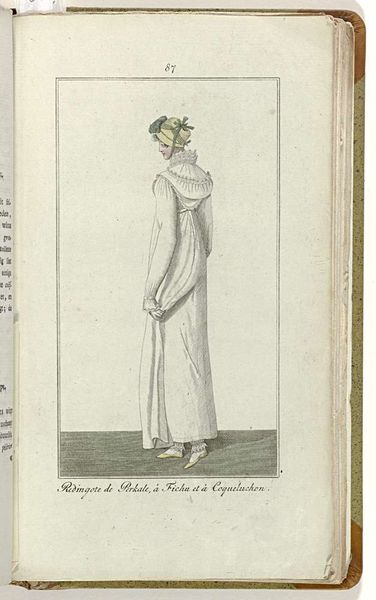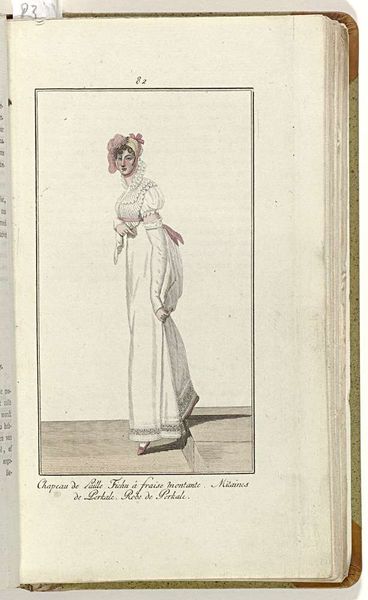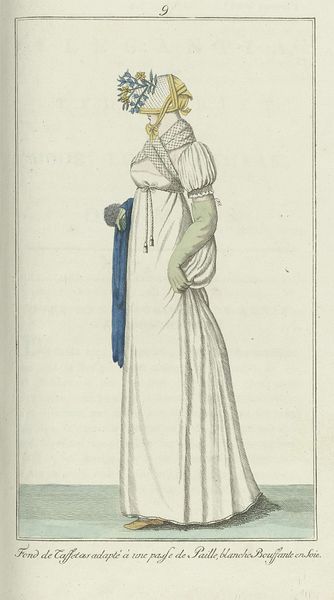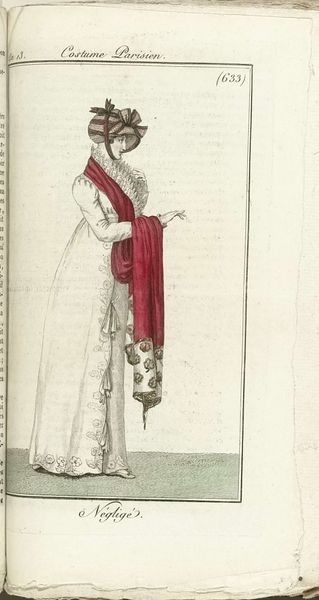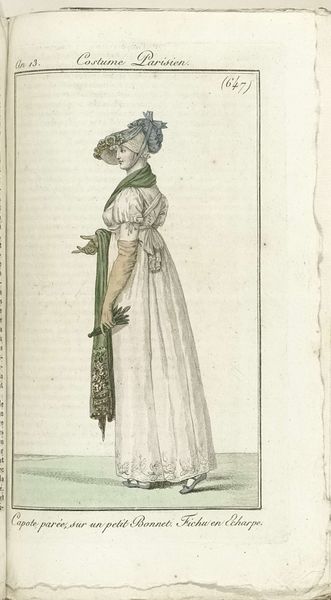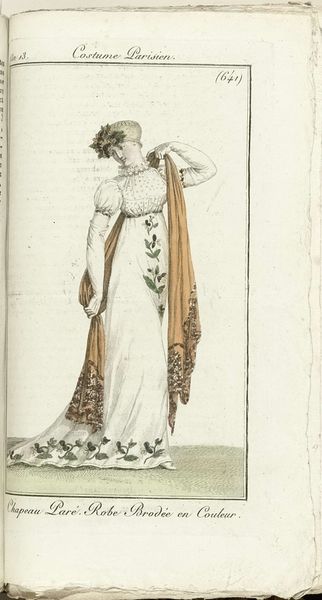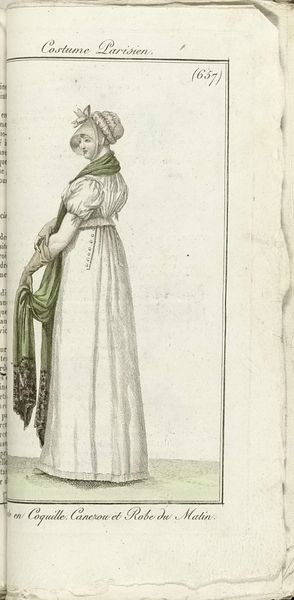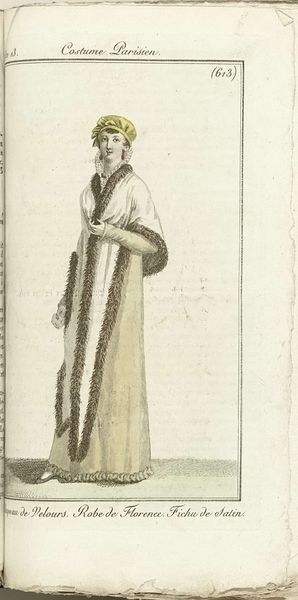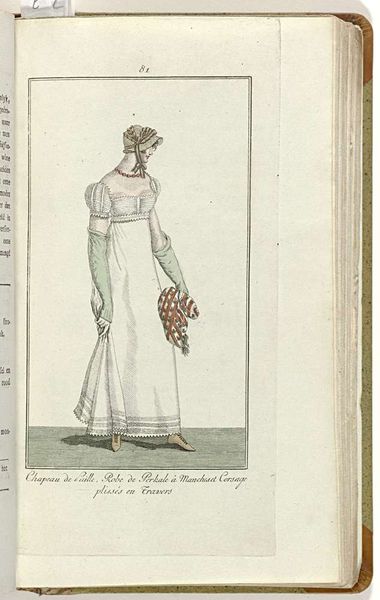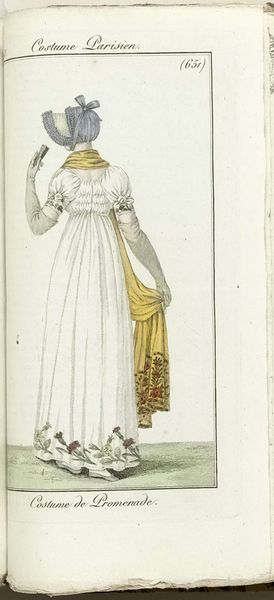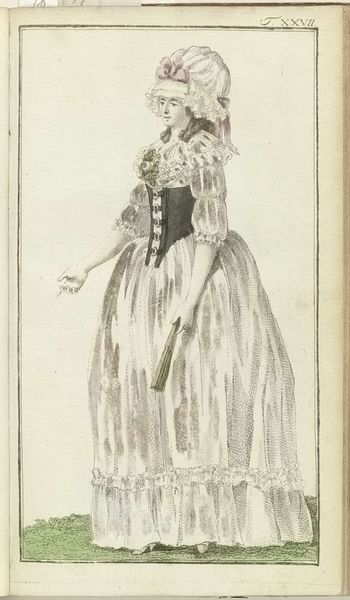
Journal des Dames et des Modes, Costume Parisien, 1805, An 13 (637) Touffes de Maronnier, en Paille 1805
0:00
0:00
horacevernet
Rijksmuseum
drawing, print, ink
#
portrait
#
drawing
# print
#
figuration
#
ink
#
romanticism
#
genre-painting
#
dress
Dimensions: height 181 mm, width 112 mm
Copyright: Rijks Museum: Open Domain
Editor: We're looking at an ink and print work called "Journal des Dames et des Modes, Costume Parisien, 1805, An 13 (637) Touffes de Maronnier, en Paille," attributed to Horace Vernet, held at the Rijksmuseum. The figure, seen from the back, feels both elegant and rather distant. How do you see this image in relation to its time? Curator: Well, these fashion plates, popular in publications like the *Journal des Dames*, were far more than just illustrations. They actively shaped and disseminated ideals of feminine identity. Vernet’s figure, with her high-waisted dress and delicate accessories, represents a specific type of bourgeois womanhood carefully constructed through clothing and presentation. Editor: Constructed how? What purpose did that construction serve? Curator: Consider the period - the Napoleonic era. These images weren't just about selling dresses. They were subtly reinforcing a social order. The empire style, with its classicizing lines, visually aligned the wearer with notions of Republican virtue and, inevitably, with Napoleon's vision of France as a new, refined empire. The detailed attention paid to costume and pose indicated that a woman's role extended beyond domestic life, with her appearance publicly symbolizing a form of political and cultural loyalty. Editor: So it was a political act, simply to dress in a certain way? Curator: Precisely! Fashion became a form of visual language. The dissemination of these plates in journals like *Journal des Dames*, aimed at an increasingly literate and affluent female readership, effectively created a visual playbook. Editor: It's fascinating to think of fashion as a kind of propaganda. It makes me wonder how aware the women themselves were of this process. Curator: That’s the critical question, isn’t it? Were they active participants, or simply puppets of societal forces? Exploring this artwork allows us to examine how images can embody and subtly enforce social norms. We are reminded how seemingly harmless pictures can be powerful expressions of broader cultural and historical currents.
Comments
No comments
Be the first to comment and join the conversation on the ultimate creative platform.
